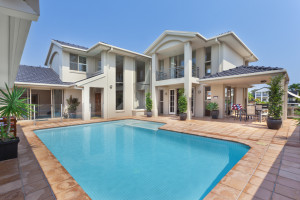
Times change and with them social customs and living ideologies take a turn. No century, however great, can retain all its values and fundamentals from its first year to its last. And this, in fact, is the beauty of our existence on this planet. Think of homes that were built a couple of centuries ago. How will they pass in today’s time? I know that those with an affinity for suburban McMansions won’t still hate the idea of 18th century plots spread over acres but most of us will only too well understand that the trend of big homes is a thing of the past.
Big homes are just one among the many trends that have gone back into time’s womb. Won’t it then be interesting to know which are the present trends that govern modern home design and what are their chances of playing a part in our future? I am surely thrilled to take you on this tour. Hope you will reach the other side of this article equally thrilled (and satisfied).
Home design ideas hold many crucial fibres
It is such a vast topic and I can begin anywhere but it would be unfair not to begin this piece with some of the most important ideas of modern home design; energy efficiency, green design, indoor environment quality, sustainable homes or renewable energy system. Let me begin with energy-efficient homes.
Home designs Australia answers serious ‘energy’ questions
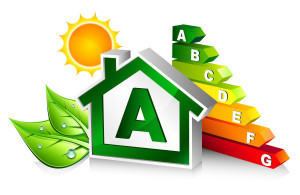 In our quest to create energy-efficient homes, we engage in tackling one of the most difficult opponents of our times- energy-crisis. It is looming large on us and unless we face it head on, there is no saying what kind of damage it may do to us. May be we will pass relatively unscathed but how safe will we leave our future generations may turn out to be the million-dollar question? So, to come back, when we build keeping energy-efficiency in mind, we not only do ourselves a favour but also give respite to those who are not even born yet.
In our quest to create energy-efficient homes, we engage in tackling one of the most difficult opponents of our times- energy-crisis. It is looming large on us and unless we face it head on, there is no saying what kind of damage it may do to us. May be we will pass relatively unscathed but how safe will we leave our future generations may turn out to be the million-dollar question? So, to come back, when we build keeping energy-efficiency in mind, we not only do ourselves a favour but also give respite to those who are not even born yet.
Modern homes designs aligned to energy goals
Why do you think something like the Renewable Energy Target is such a hotly debated topic or the idea of electric cars and electric filling stations are lapped up with such aplomb. It is only because we have become aware of the task at hand. We have understood that try as hard as we might; fossil fuel is only going to carry us so far and beyond this road, it is either renewable energy or extinction for us.
Energy efficient homes are our top pursuit
In this light, the concept of energy-efficient homes becomes all the more significant. How do we achieve decent results in this pursuit? Let me propose a few bullet points:
- We can employ cool roofs that are made up of reflective materials which absorb less and reflect more heat thereby helping in keeping the home interiors cool.
- We can use optimum value engineering that can reduce the use of lumber and its wastage by a great deal and help address the efficiency-needs of wood-framed houses.
- We can use double glazed windows and awnings in the right direction to assume maximum benefit from our home’s orientation.
- Utilising conditions of the site and climatic situations, we can employ passive heating for keeping homes warm and cool in winter and summer respectively.
- Keeping homes draught-proof and well-caulked apart from heavily insulated along the length of the attic, walls and floors can fetch good results.
- Engaging in materials (green walls for example) which diminish the sick building syndrome and enhance the indoor air quality can cool down homes.
- Using energy-rated appliances can help us tackle heat dissipation and thus reduce the work load on cooling machines (which work very hard to tackle the heat generated by malfunctioning appliances).
Sustainable home design is the need of our present and future
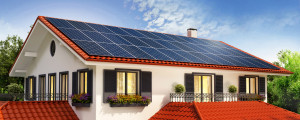 These are just a few among the many ways of keeping our homes energy-efficient. Given the penchant of our times and the situation we find ourselves in, the crown, in my opinion, goes to solar panels. They save energy in a really big way. They are expensive to install and our wallet may take a beating. It may take a few years to offset the cost of installing them through energy-savings in utility bills but there are distinct advantages of going solar.
These are just a few among the many ways of keeping our homes energy-efficient. Given the penchant of our times and the situation we find ourselves in, the crown, in my opinion, goes to solar panels. They save energy in a really big way. They are expensive to install and our wallet may take a beating. It may take a few years to offset the cost of installing them through energy-savings in utility bills but there are distinct advantages of going solar.
- First and foremost, it is a way of keeping abreast with the time that wants us to be renewable energy-centric (abstaining from the old-age concepts of fossil fuel).
- Secondly, the massive energy-savings we engage in can go a long way in reducing our monthly budget once the cost of the equipment is offset.
- We can produce our own energy and sell back the extra production to the grid. It may help us become sustainable at least where the term is related to energy sustainability (a great part of sustainable homes).
- Encouraging the use of solar energy can not only help maximise the bounty of sunlight that is granted to our country but it is also a way to show our adherence to the goals of Renewable Energy Target.
- It will be worth remembering that while hydel power and geo-thermal power generation still remain outside the ambit of mass-production and mass usage, the baton has been squarely carried by wind and solar power, the latter taking the bigger role between the two.
Great home ideas include indoor environment quality (IEQ)
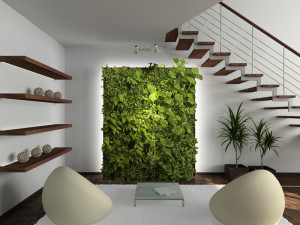 It won’t be any less worthwhile to talk a little elaborately about healthy homes and why indoor environment quality (IEQ) is so intrinsic to our living. It may be interesting and a little distressing to note that we sometimes inhale more polluted air sitting in our homes than had been the case if we ventured outside for long hours. This is exactly where the concept of green and energy conscious home design becomes integral to our pursuit.
It won’t be any less worthwhile to talk a little elaborately about healthy homes and why indoor environment quality (IEQ) is so intrinsic to our living. It may be interesting and a little distressing to note that we sometimes inhale more polluted air sitting in our homes than had been the case if we ventured outside for long hours. This is exactly where the concept of green and energy conscious home design becomes integral to our pursuit.
Thankfully, modern homes are ever so willing to acknowledge this need. Dehumidifiers, air filters, equipment dealing with volatile organic compounds and chemical sensitivities are all thoroughly analysed and employed. The gospel of outdoor air ventilation and the principles of formaldehyde-free flooring are also discussed at length by home designers today.
Green design homes are an intrinsic part of modern home design
The attributes of green home design can never be overstated so this article will remain just so incomplete if we do not include this great concept within our larger ambit of “elements of modern home design”. Green design asks us to reduce our carbon footprint and give nature a respite from our undying greed for activities that give it sleepless nights. The idea, more than anything else, is to arrest green house gas emissions, keeping them to their lowest possible denomination.
Green homes principles are against “really big houses”
As a designer I should only be glad when the home projects I work on are spread out like a castle. But having given a great weight to ethics in my career, I always tell my clients not to build more than they need. When we build over an area greater than our requirement we bring in undue maintenance, upkeep and energy wastage on the table.
To top it all, bigger homes are really difficult to be maintained in terms of energy usage and home insulation can take a very big beating in such cases. Even when we employ the services of deft home energy auditors, we will find some attic leakage or a certain draught-resistant zone in our home bleeding energy and hurting us both in terms of utility bills and comfort.
When building our homes, we tend to engage in vision of greenery and an idyllic or a nomadic life. But truth be told, building too close to the green yard can hurt the man-environment fit because a lot has changed over the past few centuries. Man, having gentrified and urbanised, has made nature a vestigial area (like the human tail) and because it has not been used too much in the recent past, nature’s strength has sagged.
A sudden decision to shift close to nature again can be great for man but it can hurt the depleted vegetations and green tracts. It is a lot wiser to build in close proximity to the city hubs.
Home decorating styles can benefit from recycled materials
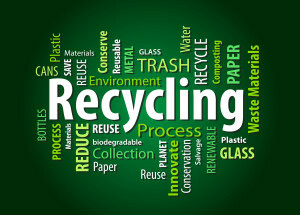 One thing that can encourage or so terribly discourage green home design is the use of recycled materials. And while at it, let us also glance over those materials which can be re-punched into something useful. Let us think of our timber decks . If we have planned to renovate it, let us not throw away the lumber but use it instead for crafting a few wooden chairs. And what to talk about the recycling theme: using organic, recycled materials can of course give environment a great boost.
One thing that can encourage or so terribly discourage green home design is the use of recycled materials. And while at it, let us also glance over those materials which can be re-punched into something useful. Let us think of our timber decks . If we have planned to renovate it, let us not throw away the lumber but use it instead for crafting a few wooden chairs. And what to talk about the recycling theme: using organic, recycled materials can of course give environment a great boost.
Home insulation explained via three types of houses
Next, we can talk of insulation; a vital cog in the wheel of modern home design. Let us take three definitions first; leaky houses, modern houses and passive houses within the broad context of home insulation.
Leaky houses have solid walls. They are poorly insulated in that their floors are uninsulated, lofts fare only marginally better, windows are single-glazed and they have a lot of vulnerabilities when it comes to draught. Due to these deficits, leaky homes require 300 kilowatt-hours per year for heating each square metre space in order to keep warm.
Modern homes are those which have got certain draught excluders and relatively well-insulated walls and floors and double glazed windows. They are decidedly better than leaky houses and need 150 kilowatt-hours a year.
Passive houses are the ones which have brilliant insulation, triple glazed windows, powerful ventilation system and an impeccable building envelope. All they require is 15 kilowatt-hours a year.
We can make out from the difference the great value home insulation holds. For figuring out if our home passes the muster in terms of insulation, it is advisable to go through a home energy audit. Above all else, it will bring to our notice those areas of your home which require moisture control, draught control and leak-proof measures.
Design your own home the minimalist way
One great aspect of today’s home design has been its quest towards minimalism. We have completely deviated, and fortunately so, from the ideas of putting in “too much in too little space”. That we have embraced the de-cluttered vision of home designing has given a contemporary edge to our craft.
A living room idea seen from the perspective of minimalism
Think how living room can benefit from the concept of minimalism. I am sharing a vision. There is a living room painted in white or neutral, earthly colour. It has a single centrepiece. Further, it has natural textile and on the windows, stained glass is being used. There are a few wall motifs and they are used in perfect proportions; following the ‘3/5th’ principle of designing.
Modern furniture adding to the minimalist show
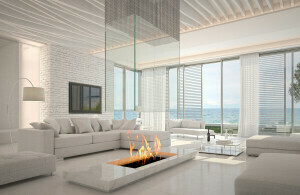 Furniture, wherever they are needed (apart from the centrepiece), are in red and black, thus cutting a contrast with the wall colours. Ceramic tiles accentuate the warmth of area rugs and can/recessed lights complete the effect. This is minimalism at its best, my friends. It says beyond words and makes living a dream. Such living rooms create awe in visitors and offer a sense of fulfilment and an indelible personality stamp to the homeowners.
Furniture, wherever they are needed (apart from the centrepiece), are in red and black, thus cutting a contrast with the wall colours. Ceramic tiles accentuate the warmth of area rugs and can/recessed lights complete the effect. This is minimalism at its best, my friends. It says beyond words and makes living a dream. Such living rooms create awe in visitors and offer a sense of fulfilment and an indelible personality stamp to the homeowners.
Family room designs reinvented through open plan living
Don’t we sometimes wonder where have most of traditional dining spaces vanished? There was a time not in too distant a past when family members sat in delightfully conventional (and sometimes suffocating, too) atmosphere and ate their dinners only to desert the rooms as soon as the gastrointestinal act was completed. A whole room, a decent space, wasted for taking food in.
Open plan living changed all this. It morphed the living room and dining area. It helped shed any possible pretence or formal air and let family members meet in a casual atmosphere. This serves us well; we who live hectic lives and we who sometimes do not get a moment together in a week or more. Just so the concept of family survives this big scare of alienation from each other, we have come up in time with the beautiful concept of open plan living.
Living room decor integrated with dining space decor
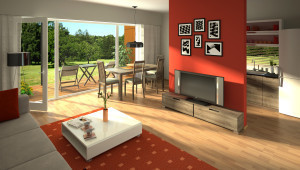 Now, even if we are busy as a bee, we can always look at each other and share a smile even as we swallow our morsels or devour our junk food in haste. Open plan living is a smartly executed vision but it is only possible to implement it properly if we have a capable designer to take up our home project. After all, it all begins with a solid floor plan and at times, integrating the limitations of a floor plan with an open-plan style is not the easiest of goals to achieve.
Now, even if we are busy as a bee, we can always look at each other and share a smile even as we swallow our morsels or devour our junk food in haste. Open plan living is a smartly executed vision but it is only possible to implement it properly if we have a capable designer to take up our home project. After all, it all begins with a solid floor plan and at times, integrating the limitations of a floor plan with an open-plan style is not the easiest of goals to achieve.
House design ideas centre around our kitchen spaces
While at it, let me also talk about the way kitchen spaces have changed over the years. Earlier, they were the zones strictly confined to cooking food. Today, the kitchen islands have become our new gossiping yards, homework tables, eating areas, and also a place replete with the warmth of quick chats and two-minute interactions.
Just as a tail that is no more required blends itself into the coccyx (unused area), those objects or places which come in frequent use lend themselves to great many improvisations. And this very thing is happening to the world of kitchen decor.
Home decorating ideas took a beating with the utilitarian kitchen designs of the past
There was a time when utilitarian kitchen spaces were enough for homeowners. No one thought any more about them than a dishwasher-sink-refrigerator triangle. Today, so many aspects of kitchen are studied and home designers work for long duration just so they get everything about the kitchen right.
We can start with countertops in granite, quartz or timber and lead towards the cabinetry; door-less or with door. From here, we can jump to the lighting section; chandeliers or recessed lights and then take up the cause of flooring; timber, tile or marble. How we place the kitchen island and how we define or redefine the work-triangle is also given a lot of attention.
It is very difficult, as you would only agree, dear readers, to summate every aspect of modern home design within one single article. No matter how hard one tries, some aspect will remain untouched or only superficially touched over.
Self sustainable homes through DIY improvement?
There are certain aspects which require more consideration and some less. I have tried to do justice to the finer aspects in this article. There is one final thing I would like to talk about a little. Over the course of last decade, courtesy reality TV shows, a DIY culture has spawned which is hitting home designing hard.
Home decoration ideas cannot be properly executed the DIY way
The Earth is not adding to its area. Because we are horizontally cramped, we are looking vertically for more space. This is leading to great many instances of storey addition. It is a brilliant way to add to your living space and cater to the demands of expanding family. However, such a move may entail fundamentals of structural and cosmetic designing, study of form and scale and council permission, which are beyond the radar of homeowners. Just like a home designer may not be a smart astronaut or even a university lecturer or a website salesman, a homeowner may not be a great home designer.
Home improvement DIY style may suffer from four big disadvantages
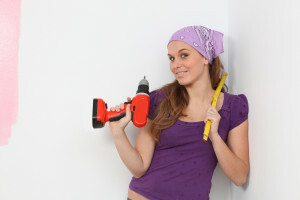
We may assume that expert hand is only required in cases of storey addition but believe me, and I am talking through experience, that professional home designers are needed where there is anything close to a home improvement required. Yes, we can have a fair shout if all that is required is changing the position of sofas and colour of tapestries and a light fitting here and a repaint there. But the moment the job becomes any more complicated than this, it begins to fall within a professional’s perimeter.
There are four ways in which DIY can destroy our aspirations and our home.
- First, there is the fear of overcapitalising because half way down we are likely to feel the need to do this and also that and because we are amateurs we won’t know the perfect mix before we go badly overboard with the budget.
- There is a possibility that half way through the DIY improvement measure we will realise that we have completely goofed up and that there is scarce possibility of setting things right again without compromising the essential frame of the home and the budget.
- Sometimes, though it does not happen all too frequently, we may end up ruining the structure so badly that even professionals might fail to redeem the structure completely.
- And of course, lest I miss out mentioning this, there is always the fear of hurting oneself- imagine being electrocuted or hurt by a load-bearing wall.
This is about all I wanted to discuss in this article. Consider it generic in nature. I have talked about some of the aspects deeply in the past and will continue doing so in future. Sharing what I have learnt in the course of my career has always been something I have looked forward to.
Future homes and future homeowners will judge us
 Every generation feels that its past generation had ample scope of improvement and we are no rare breed. One day our future generation will sit back and judge us. We may fail them in many areas and in certain styles of living, we might seem heavily compromised to them. But they will have to give it to us that we ventured into ground-breaking territories of modern home design and they will also have to agree that many ideas- for instance, green homes and energy-efficient building-which they will have taken for granted in their time were ‘invented’ by us and we had fought really hard to get these ideas going.
Every generation feels that its past generation had ample scope of improvement and we are no rare breed. One day our future generation will sit back and judge us. We may fail them in many areas and in certain styles of living, we might seem heavily compromised to them. But they will have to give it to us that we ventured into ground-breaking territories of modern home design and they will also have to agree that many ideas- for instance, green homes and energy-efficient building-which they will have taken for granted in their time were ‘invented’ by us and we had fought really hard to get these ideas going.

